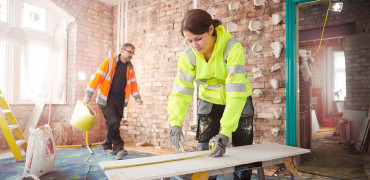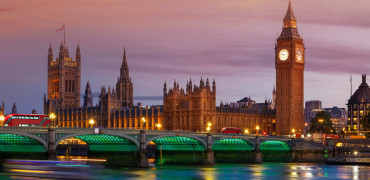We are living through strange times aren’t we?
On the one hand, the climate crisis could not be more visible, with floods around the world, fires across Europe, species facing extinction and regular warnings of a polar icecap meltdown.
On the other, we have loud scepticism from the powerful fossil fuel lobby along with a mix of climate change deniers, venture capitalists and conspiracy theorists.
This was vividly demonstrated recently with the by-election result in Uxbridge and South Ruislip, which the conservatives had expected to lose, but which they clung onto by less than 500 votes.
The failure to win this seat by the Labour Party was put down to the extension of the clean air, ultra low emissions zone (ULEZ) by the Labour Mayor of London, which many have jumped on to show that the ‘green agenda’ is moving too fast and is costing too much.
The prime Minister Rishi Sunak has also just been warned that key green pledges are ‘unachievable’ by Whitehall officials after appearing to row back on green policies.
So, will we see the government roll back even more on environmental and climate change plans if he thinks there are votes in it?
When should we demolish and when should we refurbish?
Demolishing our way to the future
At the same time, the argument over retailer, M&S’s flagship London store highlights the need for a grown-up debate on how we can all come together to reduce carbon emissions and lower energy use.
If you’ve missed the news, M&S want to knock down their 1920’s Art Deco, Oxford Street store to rebuild it into a net zero retail and office block, but this has been refused by Communities Secretary, Michael Gove.
Stuart Machin, the M&S boss has called this decision “laughable” and “utterly pathetic” and threatened to leave the Marble Arch site altogether.
He was also very critical of the economic state of Oxford Street, stating that 42 out of the Street’s 269 shops are empty and castigated Mr Gove for overturning the approval of the planning inspectors. The plans also had support from Westminster Council and the Greater London Authority.
The failure to refurbish and repurpose the existing site, along with the carbon footprint of the entire demolish and rebuild project were some of the grounds for Mr Gove’s decision.
However, M&S explained that the existing building is “riddled with asbestos” and cannot easily be made suitable for a net zero future.
The full details of the argument are better explained in this Retail Gazette report, but the issue does pose an interesting conundrum for the construction industry. When is it best to refurbish and when is it best to demolish?
The past is also the future
It is worth remembering that by the time we reach the legally-binding net zero target in 2050, around 80 per cent of the buildings that we will live and work in are already here.
As the M&S flagship store issue highlights, knocking down and building new, does come with a very hefty carbon footprint.
So, even if we wanted to knock down and rebuild all of our old buildings, the emissions created from the demolition could potentially outweigh the benefits from a new, sparkly net zero building.
I also think we might see one or two protests from people as well, if we were to start suggesting that we need to demolish Buckingham Palace, Westminster Abbey, St Paul’s Cathedral, The Albert Hall. Tower Bridge, County Hall, the Houses of Parliament, Hampton Court, (insert your own favourite historic building here), etc.
It’s not all black and white
And yet, there are lots of frankly horrible buildings that don’t come with the historic label and may well be worth tearing down and starting anew.
This is where the construction industry has an important role to play, coming up with innovative solutions to this planning and climate change dilemma.
Perhaps major projects such as Battersea Power Station point to a solution, where the ‘best’ of the past is retained and enhanced with the new, whilst the ‘worst’ of the past is removed.
What I think we can all agree on though is that there is still too much waste in our industry and, whether knocking down and building new, or refurbishing, we have to find better ways of recycling the very materials that our buildings are made of.
And for me, that’s a better place to start from, with something we can all agree on.
Russell Jones is content and communications manager



